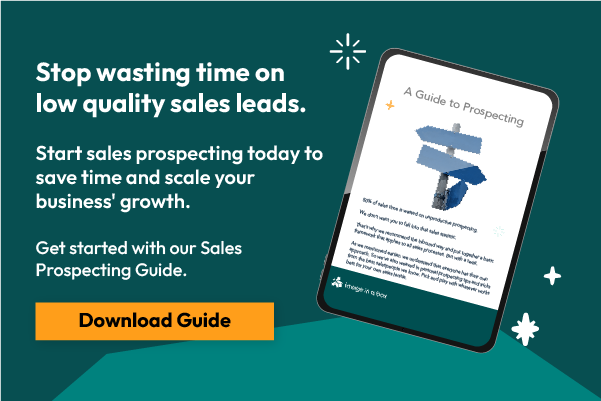The Simple Guide to Researching Your Nonprofit's Donor Persona

Contents
Do you know who your nonprofit's donors are?
If not, it's time to do some donor persona research.
This simple guide will show you how to get started.
Once you have a better understanding of your donors, you can create more effective fundraising campaigns and cultivate donor relationships that last.
Continue reading to learn more. Don't worry, it's simpler than you think!
Why do donor personas matter?
Many leaders in nonprofit sectors assume that audience profiling is too complicated and expensive for their nonprofit to consider. Fortunately, the truth is much simpler—even a small number of five-minute interviews with key donors can provide a wealth of insight into your entire audience.
What’s more, every donor data point can pay for itself many times by boosting returns on the dollars you’ve already invested into marketing.
These key points will help you jumpstart your donor persona development while keeping things simple.
Interviews and Surveys
In-person interviews and online surveys are great ways to collect information from current donors, past donors, volunteers, and even your fellow team members. To help you make the most of these interviews, we’ll discuss key questions to ask them.
Key Questions to Ask Donors and Volunteers
These questions are a great way to gain valuable insight into the factors driving your audience to give back to your cause. By figuring out what inspires existing donors, you can improve your marketing efforts to recruit new donors who have similar values and trigger points.
Lifestyle Questions
What is their occupation?
Finding out a donor’s occupation tells you a lot about their lifestyle, especially when it comes to income and their ability to support good causes. Calibrating the amount you ask for lets you dial in the “sweet spot” for an audience, so they’re primed to give as much as they can, without being immediately turned off by amounts that might be too high.
What does a typical day in their life look like?
This is a simple question that can yield a wealth of actionable information about your donors. Along with someone’s job scenario, you’re likely to find out how they’re involved with their home and family, along with what community and leisure activities they participate in.
Since people tend to share similar mindsets with their homes and communities, this is a great way to get a snapshot of values you can leverage to spur donations. If an interview subject is amenable, don’t be afraid to get deeper insight by asking follow-up questions based on specific activities they mentioned in their answer.
What are their hobbies and interests?
This question is often a great icebreaker, but it’s also one of your best ways to figure out how a person actually lives. You can even use the information to help design more effective fundraisers and other events. For example, an audience that frequently mentions a love of movies or television could be a great target for fundraisers centered on screening documentaries relevant to your cause.
Questions About Donation and Volunteering Habits
How did they find out about your cause?
This is one of your most direct questions for gauging the performance of existing marketing efforts. Did the interviewed donor hear about you from friends? Or a tv ad? Or online research?
Each answer points to a different avenue for messaging, so you can use that data to refine your marketing plans. For example—and especially in the new digital age—it’s common for non-profits to discover that they’ve been wasting dollars on tv commercials for an audience that now prioritizes online discovery.
What inspires them to give?
This question explores the non-profit equivalent of a retail company’s “buy triggers.” You’re trying to figure out what precise information or conditions prompt a prospective supporter to make the decision to donate.
Some donors want to feel like they’re making a difference themselves, and are motivated by the knowledge that they could change someone else’s life. Others might have a more personal connection with your cause, while still others may take a utilitarian view based entirely on evidence that your organization has achieved real results in the past.
In each case, you can use follow-up questions to determine the exact scenario that prompted a donation, then adjust your targeting accordingly.
What criteria do they use to judge a nonprofit?
Every donor or prospective volunteer has an internal list of criteria that they use to evaluate a nonprofit. Do they prefer organizations listed in nonprofit directories with transparent financial information? Do they prioritize participation in local communities? Or maybe they prefer to support organizations that engage in plenty of social media interaction?
Sometimes these answers reveal an audience that you’re unlikely to capture, but more often they point out areas where you could easily boost your appeal to like-minded donors, like updating your website to make it easier to use.
Key Questions for Team Members
Don’t forget that your existing team members are a vital source of information. After all, they’re the ones in contact with your existing audience, and they're intimately familiar with that group's motivations and trigger points. Conversely, they’re also guaranteed to have plenty of insight about what doesn’t work.
Which platform do current donors prefer?
Ask your team what avenues the existing audience prioritizes for interacting with your organization. Whether it’s email, phone, or social media, ensure you’re making it easy for the audience to find you where they want to.
What’s the word of mouth about your organization?
Your volunteers have probably spent a lot of time in conversation with prospective donors, so they’ll know what people are saying about you. Getting unfiltered testimonials and informal reviews is a good way to judge your public perception, especially in a world where online voices are self-selecting and often highly polarized. Think of this question as a way to add some dimension and complexity to otherwise binary public opinions.
What messaging resonates most with your audience?
Experienced team members will know what types of messaging have worked in the past—and more importantly, what types have failed. Use this information to calibrate your future campaigns.
Social Media Insights
For many non-profits, donor personas yield the greatest value when it comes to their ability to “put a face” on the otherwise nameless sea of de-personalized data generated in today’s digital world.
Social media is the single largest source of audience data for any public-facing organization, so once you’ve built a portfolio of personalized insight into your donors, it's easier to find the true value buried in huge social datasets.
Insights and Analytics
The most powerful tools for evaluating an audience come from the top three social media platforms: Facebook Audience Insights, Twitter Analytics, and Instagram Insights should be your first stop for taking a data deep dive. Use their valuable demographic information to identify your existing audience, along with analytics about your top-performing posts and activities on each platform.
You’ll quickly begin identifying common factors between lucrative audiences and can incorporate that information with your overall demographics based on social data.
User Activity
Pay attention to how your audience “lives” online when it’s not directly interacting with your organization. Look at who your current donors and volunteers follow online, what communities they participate in, and what their preferred platforms are.
You should also take a closer look at how they live their online lives. Audiences who do a lot of re-sharing and re-tweeting are good targets for powerful blogs and other “passive” online content, while audiences who engage in a lot of direct conversation are better suited to direct outreach from volunteers and other communication-oriented team positions.
Simple Steps that Yield Big Results
Whatever your organization’s focus, a few simple donor interviews can yield powerful data that creates new value when incorporated into broader social media insights.
Once you’ve built your donor personas, you can easily add to them and refine the data over the coming years, boosting the return on your investment far into the future.
Still unsure how to start?
Check out our free donor persona template. This is a fill-in-the-blank guide to building out each section of your donor persona profile (PLUS examples). You can also check out our free guide for sales prospecting to ensure you're on the right track!

